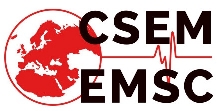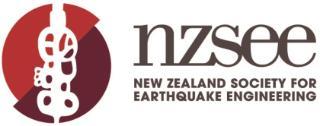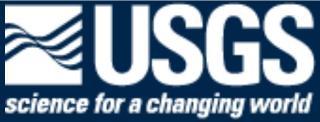Partners
e are working with many great partners who are not only helping us to do this research but are also doing their own research and other work to try and reduce the suffering caused by earthquakes. Below you find a description of how we work together to learn from earthquakes.
The Earthquake Engineering Field Investigation Team (EEFIT)
https://www.istructe.org/get-involved/supported-organisations/eefit/
EEFIT has a large membership of industry partners involved in different ways in the design of structures that must be seismically resistant. Moreover, the background and experience that academic members of EEFIT have, guarantee that rigorous scientific methods are employed, making highly reliable the data collected unearthed. The collective academic experience has the added benefit of ensuring greater continuity in subsequent missions planning and adding value to their findings. Furthermore, the synergy that EEFIT gets from academic collaboration with other reconnaissance teams enables it to make a global contribution in this field
The Institution of Structural Engineers (IStructE)
IStructE is the world's largest membership organisation dedicated to the art and science of structural engineering. The Institution is the internationally recognised source of expertise and information concerning all issues that involve structural engineering and public safety within the built environment. The Institution understands that in order to further research and support learning it is essential that academics are involved in undertaking missions to affected areas by earthquakes. It is through these missions that the teams are able to evaluate and better understand each of the unique circumstances of the affected region. It is from this perspective that the data collected and the findings gained from the EEFIT missions will not only enlighten those living in the affected area, by providing recommendations to minimise the effects of future earthquakes, but also inform and progress research and teaching, thereby enabling the next generation of engineers to better understand and mitigate the effects of earthquakes on the built environment
Earthquake Engineering Research Institute (EERI)
The primary society in the U.S. for earthquake engineering. EERI is one international organization as more than 25% of its members from outside of US and it engages in significant international collaboration with many research organizations. For over 40 years EERI managed the Learning from Earthquakes program with funding from the U.S. National Science Foundation and other sources. This founding allowed EERI to send multi-disciplinary reconnaissance teams into the field after damaging earthquakes around the world. EERI coordinate its reconnaissance teams with other teams from and outside the US, including EEFIT. EERI believe that the institute can do much more to make an earthquake reconnaissance more connected globally and therefore more effective at translating the lessons learned on these missions into more actionable information
Geotechnical Extreme Events Reconnaissance (GEER)
http://www.geerassociation.org/
GEER is an NSF-sponsored organization with the central goal of documenting geotechnical and related effects of important earthquakes and other disasters and to advance research and practice. Our initial collaboration has been positive and productive during the workshop in Oakland. GEER is pleased to hold more workshops and to conduct other research including further standardization as this will enable a much stronger collaboration. GEER is very active in the application of advanced technologies, promotion of standards in data collection and measurement, and coordination of various reconnaissance efforts and so this development is welcome. GEER see significant benefit in interacting with you participating in workshops with EEFIT researchers
New Zealand Society for Earthquake Engineering (NZSEE)
NZEE has the mission to "gather, shape and apply knowledge to reduce the impact of earthquakes on our communities". The EEFIT earthquake reconnaissance missions support one of the main objectives of NZSEES, which is to "promote co-operation among scientist, engineers and other professionals in the broad field of earthquake engineering through the interchange of knowledge, ideas, results of research and practical experience". The Society crucially promotes reconnaissance of local and overseas earthquakes and provides a forum for technical debate. NZSEE has gained invaluable experience over the past 30 years in mounting over 30 learning for earthquake missions. The Society is a key promoter and coordinator of international best practice in post-earthquake data collection.
Industry Partners
AIR Worldwide
https://www.air-worldwide.com/
AIR Worldwide is a leading catastrophe modeling company whose main purpose is the evaluation of natural hazard risk and the provision of modeling and services to the insurance industry. AIR is very excited to participate in the project providing staff members for EEFIT missions and associated dissemination activities, such in the case of Nepal earthquake in 2015. EEFIT's open reports have provided significant inputs to the development of AIR's models over the years particularly data collection. The most recent direct use of EEFIT's work was during the development of AIR's forthcoming earthquake model for India, where the damage data collected by EEFIT after the 2001 Bhuj was directly leveraged in AIR's model validation process
ARUP
ARUP is a global firm providing engineering design planning and project management services in all areas of the built environment. Earthquake engineering is an important component of the multidisciplinary service that ARUP offers to its clients worldwide. ARUP believes that there are very important lessons that can be learned from post-earthquake reconnaissance and reaffirm its belief in the importance that attendance in EEFIT missions plays in the training and professional development of ARUP's staff. The synergies realized by supporting the interaction between academia and industry that is fostered by EEFIT are also very important for the company and ARUP, therefore, commit to continue to be involved in post-earthquake engineering field investigations
Booth Management Consulting
For the past 20 years, Edmund Booth consulting practice has been involved in the design, analysis and assessment of buildings and other structures for earthquake resistance. Edmund Booth believes that one of the most important ways to improve current seismic design practice is by the study of structural performance during earthquakes. This process involves collecting field data from damaging earthquakes on what has failed and what has performed well, and then disseminating this information to researchers and also to the wider seismic engineering community, including practitioners and code committees. Edmund Booth firmly believe that EEFIT, over the 30 years of its existence, has played an important role in developing this community and strengthening its expertise, through exposure of its members to the real effects on site of earthquakes, through developing links between its academic and industrial wings and through exposing UK seismic engineers to the wider international seismic community
ImageCAT

ImageCat is a global disaster risk management consulting company, supporting national governments, the insurance sector, and NGOs in better understanding catastrophe risk using advanced geospatial technologies, models and data analytics. ImageCAT strongly believes in the importance of having a dedicated specialist post-event reconnaissance capability available to the disaster research community. It is essential that perishable data that presents itself during major disaster events are collected by experts in the weeks following an event and that recovery progress can be documented objectively by researches in the years following major earthquakes. EEFIT provides this mechanism, facilitating a group of professional engineers (from many disciplines), social scientist and data specialist to mobilise rapidly to undertake field investigation and data capture. Enable academics to join these teams is crucial for advancing many scientific fields of catastrophe risk
Sellafield Ltd

https://www.gov.uk/government/organisations/sellafield-ltd
Sellafield Ltd is responsible for the safe management of a significant nuclear inventory. This leads to a requirement to seismically design/assess some of its facilities. As corporate members of EEFIT, Sellafield has sent seven members of staff on reconnaissance missions. The organization believe that the experience gained on these missions is beneficial to the attendees and to Sellafield Ltd. Participation in a field mission is a unique opportunity to gain an appreciation/understanding of the effects of earthquakes on building and civil structures. This experience is disseminated within the organization by presentations to the engineering community. This knowledge improves the seismic design capability both for new structures and for assessment of existing structures where an appreciation of beyond design seismic issues. Also, there is the benefit of working in a team with members from a wide range of disciplines with a resulting broadening of knowledge and cross-fertilisation of ideas and providing a link between industry and academia
World Bank Group (WB)
The Global Facility for Disaster Reduction and Recovery (GFDRR) is a partnership of the world bank, United Nations, major donors and recipient countries under the International Strategy for Disaster Reduction (ISDR) system to support the implementation of the Hyogo Framework for Action (HFA). One of GFDRR's main roles is to technically assist client government in achieving Disaster Risk Reduction (DRR). Post-disaster damage data is an important source of information that can improve modelling capabilities, by providing feedback on how the physical environment responds to hazards under real situations. Post-earthquake field missions are not only a source of damage data, but also the source of important observations that analyses the reasons as to why the built environment fails during disasters. These observations also lead to lessons leant for future planning purpose, completing the cycle of disaster risk management. Learning from past disasters events is a key activity to improve our ability to be prepared for the next event (provided that the lessons learnt are acted upon).
Academy Partners
German Research Centre for Geosciences (GFZ)
https://www.gfz-potsdam.de/startseite/
GFZ is the German national research centre for geosciences, focusing its activities on the geosphere and the complex system Earth. A strong focus of GFZ's research is related to the development of innovative methodologies for the assessment of multi-resolution seismic exposure and vulnerability models. These models are of paramount importance for a prompt and reliable estimation of the impact of strong earthquakes on the urban and rural environments and as such. Post-earthquake reconnaissance activities play a major role by providing prompt information on damage extent as well as valuable data for calibrating exposure and vulnerability models. reconnaissance activities, possibly harmonized with pre-event surveys, might offer unprecedented support to emergency managers. The EEFIT mission and field activities are in line with the ones pursued within GFZ by the HART (Hazard and Risk Team), a multidisciplinary task force which can be activated in the occurrence of significant events for carrying out extraordinary field-activities
Politecnico di Torino
https://www.polito.it/?lang=en
Earthquake engineering is a major focus of the research at the Department of Structural, Geotechnical and Building Engineering at the Politecnico Di Torino. The Department is currently researching a range of initiative in this area, one of which is developing earthquake collection tools, which constitute a synergy with one of the objectives of the project: "Learning from earthquakes".
Pontificia Universidad Catolica (PUC) de Chile & CIGIDEN

https://www.uc.cl/ https://www.cigiden.cl/
University founded in 1888. The PUC is one of the oldest, largest and best-ranked universities in Latin America. This Institution appears 127 in the QS Global World Ranking 2020 and it is in the fourth place of best universities in Latin America. The school of Engineering represent in size about one-fifth of the whole university and has been widely recognized in several research fields and a very successful admission process with a student cohort in the top 1%of the country. Due to the geographical location in the heart of a very seismically active region, the PUC is strongly aware of the importance of earthquake reconnaissance missions in understanding deficiencies in building codes and practices, and how earthquakes impact communities. Earthquake engineering is a strong focus of the PUC research activities and the efforts of the university in this area are channelled through the Research Center of Integrated Disaster Risk Management (CIGIDEN) led by the PUC. CIGIDEN has developed its own spatial data infrastructure to serve the purpose of integrated risk analysis in Chile
United States Geological Survey (USGS)
The past missions of EEFIT after earthquakes including the 2010 Christchurch, 2011 Tohoku Earthquake and Tsunami (Japan), 2015 Nepal earthquake and 2016 Ecuador earthquake have set the bar on collecting and more importantly curating earthquake effects. EEFIT has pioneered method to collect and distribute this important information. USGS has worked with social media data since 2008. USGS is focused on the rapid detection of earthquakes but also the potential to use this media for earthquake impact estimates. USGS has collected over 40 million earthquakes related tweets. The concept suggested by EEFIT to develop a simple tweeter assessment protocol has the potential to rapidly engage this community to collect scientific relevant data. EEFIT is uniquely positioned to do this
Public Sector Partners
GNS Science
GNS has participated in EEFIT missions and recognizes the direct (and indirect) benefits in the past and their contributions both to the research directions (filling missing knowledge gaps) and the regulatory environment (ensuring building standards are up to date and fit for purpose) both within New Zealand but also in the countries where missions have participated. The contributions and connections made during such missions have been observed to be longlasting and have resulted in a much better appreciation of what unknown, as well as what is known. In the New Zealand circumstance, with its high seismicity and high levels of seismic design and mitigation, this knowledge has been focused on the performance behaviour of system and buildings used here in its modern society. EFFIT model directly relates to providing expertise and support to locals within affected communities. GNS has observed this alternative model is equally effective and appreciated by those communities under stress
Government Office for Science
https://www.gov.uk/government/organisations/government-office-for-science
The Government Office for Science aims to ensure that government decisions and policies are informed by the best scientific and technical evidence. In the event of an emergency, one of the roles of the office is to identify suitable UK experts to be deployed, either through HM government directly or via the European Union Civil Protection Mechanism (EU CPM), to aid in disaster response. After the 2016 Ecuador earthquake, the Government Office for Science contacted EEFIT to identify structural engineers with expertise in earthquake damage assessment to evaluate buildings in the affected area. Due to the success of this mission, the office is looking to formalise a list of suitable experts for deployments, based on specific requirements of the emergency region and facilitate early access to earthquake affected sites
NGO's
Euro-Mediterranean Seismological Centre (EMSC)

The EMSC is a not-for-profit organization which federates seismological observatories in the Euro-Mediterranean region. It is one of the top global earthquake information centres in the world and a key data and product provider for the seismological research community. The EMSC has been pioneering citizen seismology for over ten years, from participatory projects, such as the LastQuake mobile application (see below for further details), to the support of citizen-operated seismic networks. Through a crowdsourcing process, the EMSC improves rapid situation awareness among the public while exploiting and promoting a cost-effective alternative to traditional data collection methods. The EMSC is underpinned by a novel, multi-channel social media strategy
Learn more about LastQuake: https://www.emsc-csem.org/service/application/
Download LastQuake: https://play.google.com/store/apps/details?id=org.emsc_csem.lastquake&hl=fr&gl=US
Global Earthquake Model (GEM)
https://www.globalquakemodel.org/
The GEM Foundation is a public-private partnership that drives a global collaborative effort in which science is applied to develop high-quality resources for transparent assessment of earthquake risk and to facilitate their application for risk management around the globe. GEM has already developed a variety of tools that are being applied worldwide to support regional and local projects with the aim of progressively build a Global Earthquake Model. GEM is very well aware of EEFITs activities and its collaboration with many of its partners and the NGO acknowledges that earthquake reconnaissance is key in developing earthquake risk models. GEM recognizes EEFITs contribution to its Inventory Capture Data Tool and believes that this tool can be developed further to improve the gathering of impacts and consequences of earthquakes




















